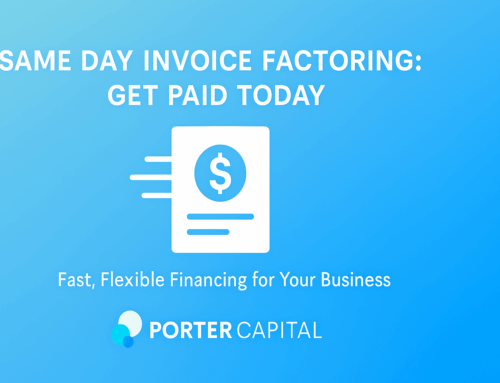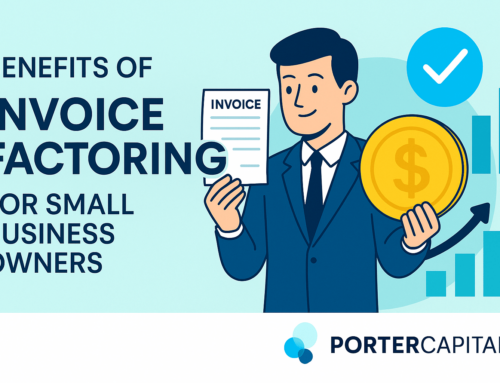Table of Contents - Quick Links
For example, a toy manufacturer ramping up production ahead of the holiday season might face a 90-day payment cycle from large retailers. By factoring their invoices, the manufacturer receives immediate cash to cover raw material costs, pay workers, and fulfill increased demand, ensuring timely delivery of goods while avoiding cash flow constraints.
Understanding Invoice Factoring
Invoice factoring is a financial solution where manufacturers sell their accounts receivable to a financing company at a discount. This process allows businesses to convert outstanding invoices into immediate cash, providing a streamlined method to improve cash flow. By utilizing this strategy, manufacturers can focus on production rather than cash collection.
One key feature of invoice factoring is its flexibility. Unlike traditional loans, which often come with strict qualifications and lengthy approval processes, factoring can be accessed quickly. This is particularly beneficial for manufacturers needing funds urgently during peak seasons where demand surges unexpectedly.
Moreover, the invoice factoring process can be tailored to fit various needs. Manufacturers can choose to factor some invoices or all of them, making this a versatile tool suitable for both small and large businesses alike. This adaptability allows manufacturers to strategically manage their cash flow according to changing market conditions.
Identifying the Seasonal Demand Cycle
Understanding the seasonal demand cycle is crucial for manufacturers aiming to maximize their productivity and profitability. There are a few ways manufacturers can identify seasonal demand trends:
- Analyzing Historical Sales Data: Reviewing past sales patterns can reveal seasonal peaks and troughs, helping forecast future demand.
- Monitoring Industry Trends: Staying updated on market reports and industry insights can highlight shifts in seasonal preferences or behaviors.
- Collaborating with Retailers: Retail partners often have valuable data on consumer demand and can provide forecasts based on their sales trends.
- Using Predictive Analytics: Leveraging technology and tools to analyze data and predict upcoming demand spikes with greater accuracy.
- Tracking External Factors: Keeping an eye on holidays, weather patterns, and economic conditions that can influence consumer behavior.
- Engaging with Customers: Direct feedback, surveys, and social media insights can offer clues about what products are likely to be in demand during specific seasons.
As the holiday season approaches, many manufacturers face the need to ramp up production significantly. This often requires investing in materials and labor before receiving any payment. By utilizing invoice factoring, manufacturers can secure the necessary funds to meet increased orders during the holiday season without hesitation.
Furthermore, understanding these cycles aids in proactive inventory management. With access to quick cash through invoice factoring, manufacturers can ensure they have sufficient stock on hand to meet consumer demand without risking overstocking, which can tie up valuable resources.
Benefits of Invoice Factoring for Manufacturers
The benefits of invoice factoring for manufacturers during peak seasons are numerous. First and foremost, quick access to cash improves overall liquidity, enabling timely payments to suppliers, contractors, and increased labor costs. This liquidity is vital during accelerated production schedules.
Additionally, invoice factoring can reduce the credit risk associated with extending payment terms to customers. Since the factoring company handles the collections, manufacturers can mitigate the risk of late payments from clients, ensuring a more stable cash flow.
Moreover, with improved cash flow from invoice factoring, manufacturers can reinvest in their business. This funding can be used to upgrade equipment, hire temporary staff, or even expand marketing efforts to capture more sales during the holiday rush.
How to Implement Invoice Factoring
Implementing invoice factoring requires a well-thought-out approach. First, manufacturers should assess their cash flow needs and determine how much working capital is necessary to effectively manage production during peak seasons. By evaluating past performance and projected demand, businesses can establish a clear understanding of their funding requirements.
Next, manufacturers can shop around for factoring companies that align with their specific industry needs. Each funding company may have different fees, terms, and conditions. It’s advisable to thoroughly research potential partners to ensure they offer favorable terms and responsive customer service.
Once a factoring company is selected, the onboarding process usually involves submitting invoices, which the factor will then evaluate. Manufacturers should be prepared to provide accurate paperwork, as this can significantly speed up the financing process. Establishing good communication with the factoring company can facilitate a smoother experience.
Success Stories of Manufacturers
Numerous manufacturers have leveraged invoice factoring to successfully navigate seasonal demand challenges. For example, a textile manufacturer faced overwhelming orders during the holiday season but lacked the capital to fulfill these demands. By turning to invoice factoring, they gained immediate access to cash to purchase raw materials and hire additional workers. This decision led to a 25% increase in holiday sales, emphasizing the potential of factoring.
In another example, a toy manufacturer experienced significant cash flow issues due to delayed payments from clients. This lag hindered their ability to produce toys on time for the holiday market. By implementing invoice factoring, they were able to quickly convert their invoices into cash and meet production deadlines, ultimately capturing a larger market share during the season.
These success stories illustrate the versatility and effectiveness of invoice factoring as a strategic financial tool. Manufacturers that adapt to seasonal demands effectively set themselves apart by ensuring they can operate efficiently, fulfill orders promptly, and maintain healthy financial practices, which can lead to long-term profitability.
Invoice Factoring with Porter Capital
Invoice factoring can transform the holiday season for manufacturers. Porter Capital offers flexible credit lines from $25,000 to $25 million, providing upfront funding within 24 hours of invoices being submitted. We free up cash in your account instantly, resolving cash flow challenges and helping you stay ahead. Our invoice factoring solutions have empowered businesses to grow, manage seasonality, and maintain steady cash flow with ease.
Call us at 1-888-865-7678 for more information or reach out online to request your free, personalized proposal.




